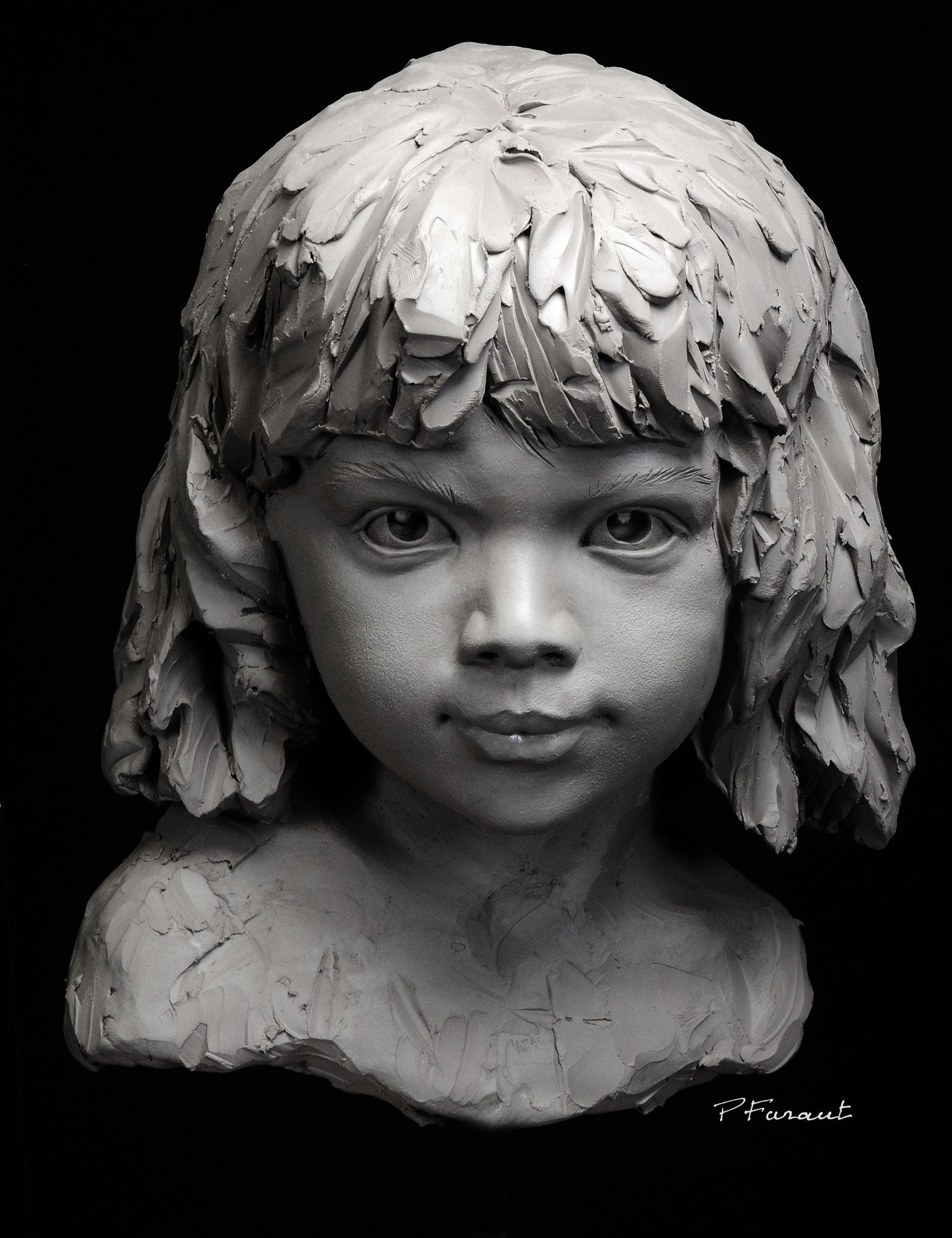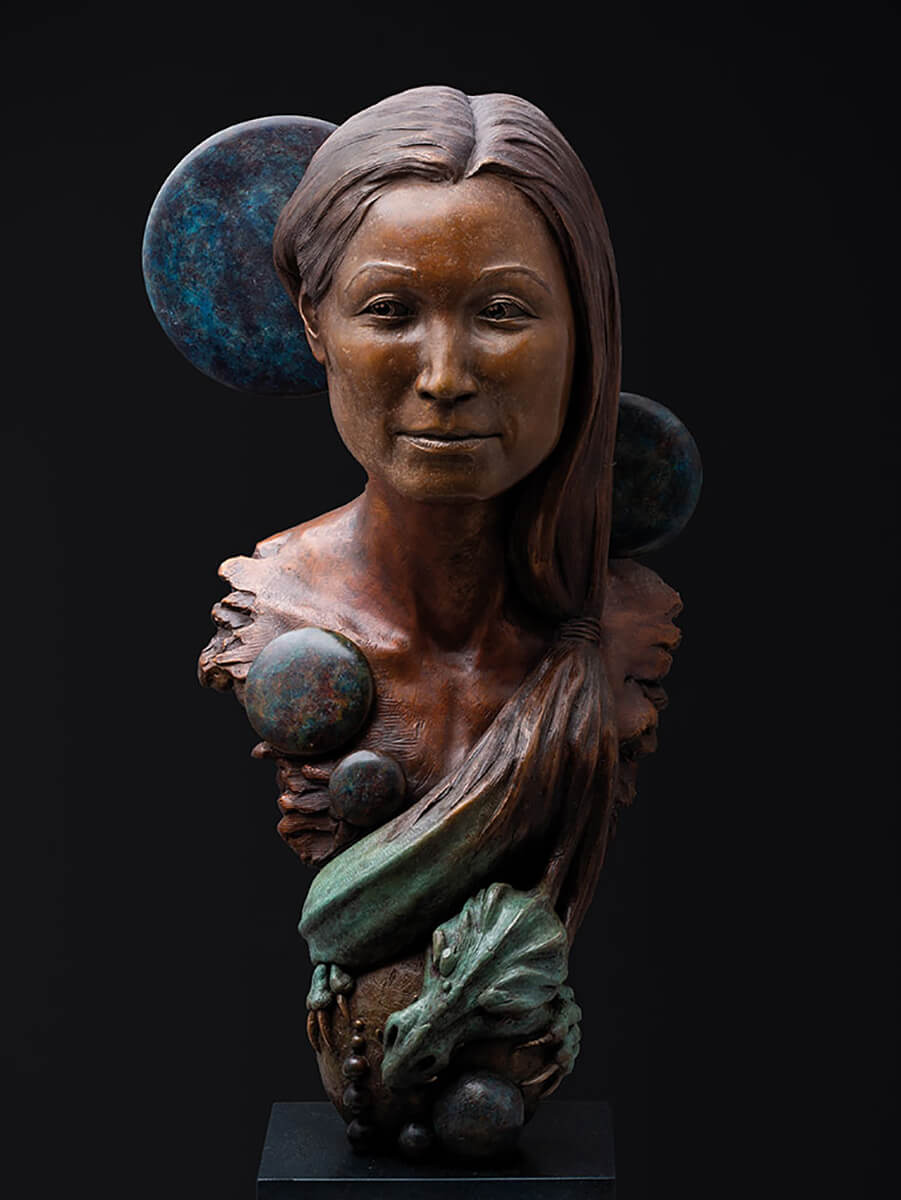Master of Faces: Explore the Globe of a Portrait Sculptor
Wiki Article
Shaping the Human Kind: Representations of the Body in Sculpture
Forming the Human Form: Portrayals of the Body in Sculpture is a thorough expedition of the imaginative depiction of the body throughout background. This event explores the various techniques, styles, and social perspectives that have actually formed the means musicians have actually represented the human kind in sculpture. From the elegant marble sculptures of old Greece to the detailed work of arts of the Renaissance, from the flamboyant and luxuriant Baroque and Rococo sculptures to the progressive and abstract expressions of modern-day and modern sculpture, this exhibit provides a fascinating journey through the advancement of this classic art kind - Robert C Hitchcock Sculptor. By taking a look at the varied interpretations and representations of the body, visitors will certainly obtain a deeper understanding of the creative, social, and societal influences that have actually formed our perception of the human type.Old Greek Sculptures

Among the defining qualities of Old Greek sculptures is their emphasis on symmetry. Each part of the body is carefully crafted to be symmetrical to the entire, producing a feeling of equilibrium and harmony. The carvers paid mindful interest to every information, from the placement of muscular tissues to the positioning of arm or legs, making sure that each number showed up both effective and elegant.
The Greeks likewise valued the idea of idyllic beauty. As opposed to depicting the blemishes and defects of the human type, they sought to develop an idealized version of fact. The sculptures typically represented gods, professional athletes, and goddesses, with their bodies formed to excellence. Robert C Hitchcock Sculptor. This idyllic portrayal of the human type not only celebrated physical appeal yet likewise functioned as a means of inspiring and uplifting the customer.
Renaissance Masterpieces
Continuing the exploration of the portrayal of the human form in sculpture, Renaissance masterpieces even more refine the idealized idea of charm, building upon the symmetrical and harmonious proportions of their Ancient Greek predecessors. Throughout the Renaissance period, which spanned from the 14th to the 17th century in Europe, artists sought to revitalize the timeless ideals of ancient Greece and Rome. They examined and imitated the works of the ancient masters, aiming for a practical representation of the human body.
His masterpiece, the sculpture of David, exemplifies the excellence and poise that came to be associated with Renaissance art. Standing at over 17 feet tall, the sculpture portrays the biblical hero in a state of calmness before his fight with Goliath.
An additional remarkable Renaissance carver was Donatello. His sculpture of Saint George, created in the very early 15th century, showcases the artist's capacity to share toughness and the aristocracy via the human form. The statuary portrays the legendary dragon-slaying saint in a poised and certain position, radiating a sense of heroism.
Renaissance work of arts not just commemorated the physical appeal of the human body yet likewise shared much deeper meanings and emotions. Via their thorough interest to information and experienced workmanship, Renaissance artists elevated the art of sculpture to new elevations, leaving a long-term tradition that remains to influence artists to this day.
Baroque and Rococo Sculpture
Rococo and baroque sculpture exhibits the elaborate and elegant representation of the human kind throughout the 17th and 18th centuries. Artists such as Gian Lorenzo Bernini and Alessandro Algardi created sculptures that communicated motion, usually depicting numbers in significant positions.
Rococo sculpture, on the various other hand, arised as a reaction to the grandiosity of the Baroque period. It accepted an extra fragile and playful technique, concentrating on detailed styles and attractive information. François Boucher and Jean-Baptiste Pigalle projected Rococo artists that crafted works defined by their style and appeal. They frequently represented numbers in sensuous and graceful postures, showing the laid-back and wayward nature of the Rococo style.
Both Rococo and baroque sculpture put a great focus on the human kind, commemorating its charm and expressing an array of feelings - Bronze Sculptures. Whether it was the dynamic and powerful figures of the Baroque or the graceful and enchanting numbers of the Rococo, these sculptures captured the significance of the human experience, leaving a long-term influence on the art world
Modern and Contemporary Sculpture
The advancement of forming the human form continues in contemporary and contemporary sculpture. With the development of brand-new materials and strategies, musicians have actually pushed the limits of representation, testing typical concepts of form and appeal. Modern sculpture arised in the late 19th century as an action to the changing social and political landscape. Artists such as Auguste Rodin and Constantin Brancusi looked for to record the essence of the human form, stressing emotion and motion. Rodin's "The Thinker" and Brancusi's "Bird in Room" are legendary instances of this duration.In the 20th century, the increase of abstraction and theoretical art brought new opportunities for artists. Musicians like Henry Moore and Barbara Hepworth explored the relationship between type and area, developing abstracted and natural figures that tested typical notions of representation. Moore's significant bronze sculptures and Hepworth's carved rock jobs are celebrated for their innovative use materials and their capacity to stimulate a sense of the body in a non-literal method.
Contemporary sculpture remains to push the boundaries of representation and explore brand-new products and strategies. Artists like Antony Gormley and Ron Mueck create hyper-realistic sculptures that challenge our understanding of the human body, while others, such as Louise Bourgeois and Kiki Smith, use the body as an allegory for personal and cumulative experiences. The human form continues to be an effective topic in sculpture, giving a system for artists to check out identification, feeling, and the human condition.
Social Perspectives on the Body

In the expedition of forming the human form, the exam of social point of views on the body reveals a rich and varied tapestry of interpretations and depictions. Throughout background, different cultures have held unique beliefs and values pertaining to the human body, resulting in distinctive imaginative expressions - Contemporary Sculptures. These social point of views form the means the body is portrayed and perceived in sculpture, mirroring societal norms, religious ideas, and aesthetic perfects
For circumstances, ancient Greek sculptures celebrated the idyllic human form, emphasizing physical elegance and athleticism. In contrast, ancient Egyptian sculptures focused on the preservation of the body in the afterlife, depicting figures with idyllic features and inflexible postures.
In a similar way, cultural perspectives on the human body in African art often highlight common identity and spiritual ideas (Equine Sculptures). Sculptures from different African societies portray the body with exaggerated attributes, symbolizing ancestral connections and social values. Aboriginal cultures in the Americas also have distinct viewpoints on the body, often showing it in a spiritual context and highlighting the link in between human beings and nature
The examination of social perspectives on the human body in sculpture enables us to obtain understanding right into the worths, ideas, and looks of different societies throughout background. It highlights the diversity of human experiences and the methods which art reflects and forms our understanding of the human kind.

Final Thought
Finally, the portrayal of the human body in sculpture has actually progressed in time, mirroring different social viewpoints and artistic activities. From the idealized figures of Old Greek sculptures to the reasonable and stirring Renaissance work of arts, and the complex details of Baroque and Rococo sculptures, to the abstract and speculative kinds of contemporary and contemporary sculpture. The human body has been a topic of fascination and creative expedition throughout background, showcasing the varied interpretations and expressions of the human form.Shaping the Human Type: Representations of the Body in Sculpture is an extensive exploration of the artistic representation of the human body throughout history. From the elegant marble sculptures of ancient Greece to the elaborate masterpieces of the Renaissance, from the luxuriant and flamboyant Baroque and Rococo sculptures to like this the progressive and abstract expressions of modern and contemporary sculpture, this exhibit supplies a fascinating trip through the development of this ageless art type. Musicians like Antony Gormley and Ron Mueck develop hyper-realistic sculptures that test our perception of the human body, while others, such as Louise Bourgeois and Kiki Smith, use the body as an allegory for collective and personal experiences. The human type continues to be a powerful subject in sculpture, giving a platform for artists to explore identification, emotion, and the human problem.
From the idealized numbers of Old Greek sculptures to the realistic and stirring Renaissance work of arts, and the elaborate details of Baroque and Rococo sculptures, to the abstract and experimental forms of modern-day and modern sculpture.
Report this wiki page